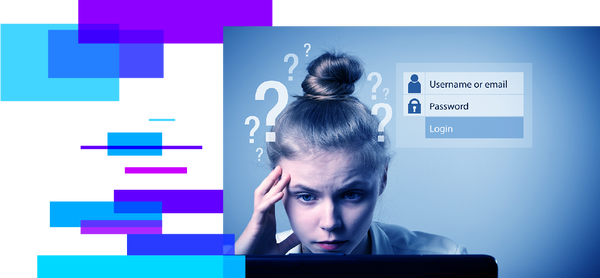How to Protect Your Online Privacy

Scroll, scroll, accept.
That is how almost everyone deals with terms and conditions and privacy policies when joining a new app or using a new product or service.
But have you ever thought about what happens after you click/tap on “accept”?
Understanding Your Right to Online Privacy
Besides the ways a company can use your data, they almost always get your consent to share it with third parties. Once you do this, you don’t have much control over what happens with your personal information.
The entire process involves complicated legal terms that most people understandably avoid. That is why we need laws and regulations that can protect your right to online privacy.
If you live in the European Union, the General Data Protection Regulation (GDPR) protects your personal data and gives you more flexibility in managing your privacy. If you are a California resident, the California Consumer Privacy Act (CCPA) enables you to ask companies to explain how they collect and sell your private information as well as giving you the right to ask for that data to be deleted entirely.
Online privacy is your right and it involves a couple of fundamental principles that both the GDPR and the CCPA cover. To maintain your privacy on the Internet, you must be able to:
- Know what personal data an organization collects about you.
- Understand how they manage your personal data and if they sell it to third parties.
- Deny the sale of your personal data.
- Access all the data the organization has on you.
- Ask for that data to be deleted entirely from the organization’s systems.
- Not suffer any consequences or form of discrimination for exercising your right to online privacy.
3 Important Stages for Your Online Privacy Protection
So how do you start protecting your Internet privacy?
To cultivate it in the long run, break it down in 3 stages:
- Stage 1: do an in-depth review of your devices, apps and accounts and strengthen your foundation
- Stage 2: start building safer online habits and incorporate them into your workflow and daily routine
- Stage 3: do periodic privacy reviews to make sure you cover any changes or developments in your setup or habits.
The best online privacy protection is an ongoing process that starts with a strong foundation and then incorporates tweaks along the way. It is also the one that makes the most effective use of your time and resources.
How to Improve Your Online Privacy (A Checklist)
Here’s how to protect your privacy and security on the Internet by combining your need for safety with your curiosity, all while getting that satisfaction of a clean setup that works without interrupting your flow.

Stage 1: Do an in-depth review & setup
✔ Make a list of your Internet-connected devices
✔ List the types of information you have stored on your devices (pictures, work documents, applications, passwords)
✔ Make a list of online services you use and highlight the ones you use most frequently
✔ Define how valuable each asset is to you (online accounts, apps, pictures, emails, work stuff)
✔ Turn on two-factor authentication for those important accounts and set passwords for your essential devices
✔ Adjust your privacy and security settings for your most important accounts (Google, Facebook etc.)
✔ Set up guest accounts or access to the accounts and devices you share with someone else (family members, friends, work colleagues)
✔ Remove all unnecessary applications from your devices
✔ Delete any online accounts you don’t use anymore (if they’re from an EU-based or California-based provider, you can also ask them to delete your data entirely)
✔ Back up all your important assets on an external hard drive or in the cloud (encrypted) or, ideally, both
✔ Update all your software applications across your devices (from laptop to smartphone and the apps on it to your internet-connected vacuum)
✔ Secure your web browser by strengthening your security and privacy settings
✔ Install a security solution and explore its features to make sure you get the most out of it.
This in-depth review will help you set a strong foundation for your online privacy and security. However, there’s only so much you can do manually.
Get help to take control of your online privacy and personal data with Bitdefender Digital Identity Protection. It monitors your digital footprint starting with your email address and phone number and alerts you if your personal data is leaked in new breaches and through privacy threats, including social media impersonators.
“Digital identity protection services alert customers when their private information has been leaked, so they can act quickly and avoid long-term damage. These services do not prevent identity theft or fraud and they cannot remove your information from the dark web or stop a breach that has already happened or a breach that’s already in progress.
However, they do make it easier to deal with the aftermath of a data breach. So digital identity protection is less about stopping cybercriminals from using your information and more about knowing when your information has been exposed so you can take decisive action to minimize any financial or reputational loss caused by attackers misusing your data.”
Liviu Arsene (Senior E-Threat Analyst, Bitdefender)
Stage 2: Build safer online habits
To make your Internet privacy strong and long lasting, there are a couple of things you can do every time you go online that make a huge difference when combined.
✔ Gradually move your passwords to a password manager - you will only have to remember a single password and it will constantly save you from setting weak passwords and reusing them
✔ Use a virtual private network (VPN), especially when you use Wi-Fi networks that are not yours or when using websites where you need extra safety (think medical and financial ones)
✔ Keep your software up to date as you go along by setting your apps to update automatically where possible and by setting a weekly reminder for manual updates
✔ Pay attention that all the websites you use employ HTTPS to secure your connection and the data you submit to them
✔ Share files online securely through reputed services and avoid sending personal data via instant messaging platforms (IDs, documents, bank details, passwords especially!)
✔ Use secure online communication platforms that use encryption and do not share your data with third parties.
Stage 3: Do periodic privacy reviews
Every few months you can do a quick checkup of your essential accounts and devices to make sure everything is in top shape.
✔ Delete your browser cookies and cache
✔ Uninstall unnecessary applications and add-ons (especially important to do in your browser!)
✔ Disallow access of third-party apps to your main accounts and apps (e.g. your fitness tracker may plug data into the health app on your smartphone)
✔ Check for firmware updates for your devices and run those updates
✔ See if there is any new privacy or security feature you can turn on or a feature or permission you can turn off for added protection.
What Will Happen to Privacy Online?
“As technology evolves, online privacy will likely take a beating.
These new technologies will be more data-centric in the sense of interpreting the data to build a more accurate profile of you using the existing information and distilling it better than ever.
The principle ‘if something is free, then you’re usually the product’ applies because you’re paying with your data.
Of course, while we can never be 100% sure that privacy policies are actually entirely met, we hope or we can expect to see a rise in laws and data protection regulations which may shift the power balance towards consumers and actually give them more control - or at least visibility - into the type of data they’re broadcasting or sharing with the services they use.”
Liviu Arsene (Senior E-Threat Analyst, Bitdefender)
Cultivating a cautious attitude and being protective of your data are essential to keeping your online privacy to a level you feel comfortable with. At the same time, it is a matter of fact that some things are outside your control. That is why it is essential to know what to do if you notice your data is leaked, exposed, and otherwise used for malicious purposes.
“The more we interact with the digital world, the less likely it is for us to maintain our privacy. For instance, when it comes to data breaches, the regular user really doesn’t have a say.
They could take all the necessary precautions to make sure they’re not actively leaking information but, when a company gets breached, it’s not because of them. It’s because of the organization’s security oversight or because the technology on their end is so complex that it’s barely manageable.”
Bogdan Botezatu (Director of Threat Research and Reporting, Bitdefender)
Protecting this essential right to privacy is not just a matter of settings or laws. It is the mindset that makes you invest time and other resources to be safer online.
The principle that underpins online privacy is healthy skepticism. It involves asking “why are they asking for this data or permissions?” It is what makes you think twice before opening a link or downloading a suspicious attachment. It is also what helps you use your curiosity to advance your knowledge and keep it up to date.
People like you, who help others with their online privacy, create a safer environment for everyone else.
“It’s obvious that people have to interact with the Internet and have to disclose information about themselves when they do. But they could limit the impact of a potential data breach by providing only the information that’s mandatory for that service to work.
When you sign up for an account, a home address, for instance, is not mandatory. We suggest that you don’t fill in those details. If you can do without adding your phone number to that service, it’s also another thing that won’t leak online in case of a data breach and so on.
Digital privacy has many elements outside your control, but you can minimize the impact of a potential data breach by sticking to the absolute necessary things that you need to communicate about yourself.”
Bogdan Botezatu (Director of Threat Research and Reporting, Bitdefender)
Whatever you decide to do next, now you are well equipped for it! And we have your back.
tags
Author
Choose what the experts use. Award-winning cybersecurity you can trust and rely on.
View all posts

